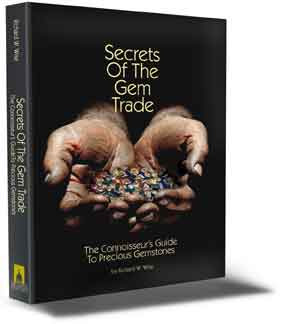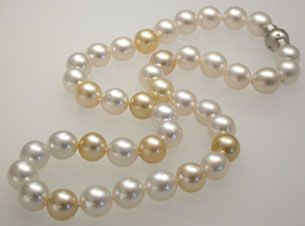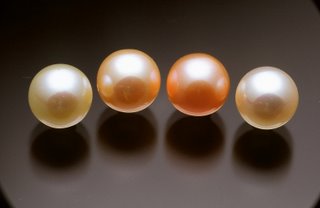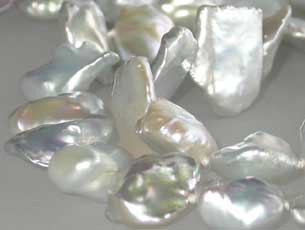Book Review:
Tears of Mermaids, The Secret Story Of Pearls
Stephen G. Bloom
St. Martins Press
ISBN: 9780312363260, $27.99
by Richard W. Wise, G.G.
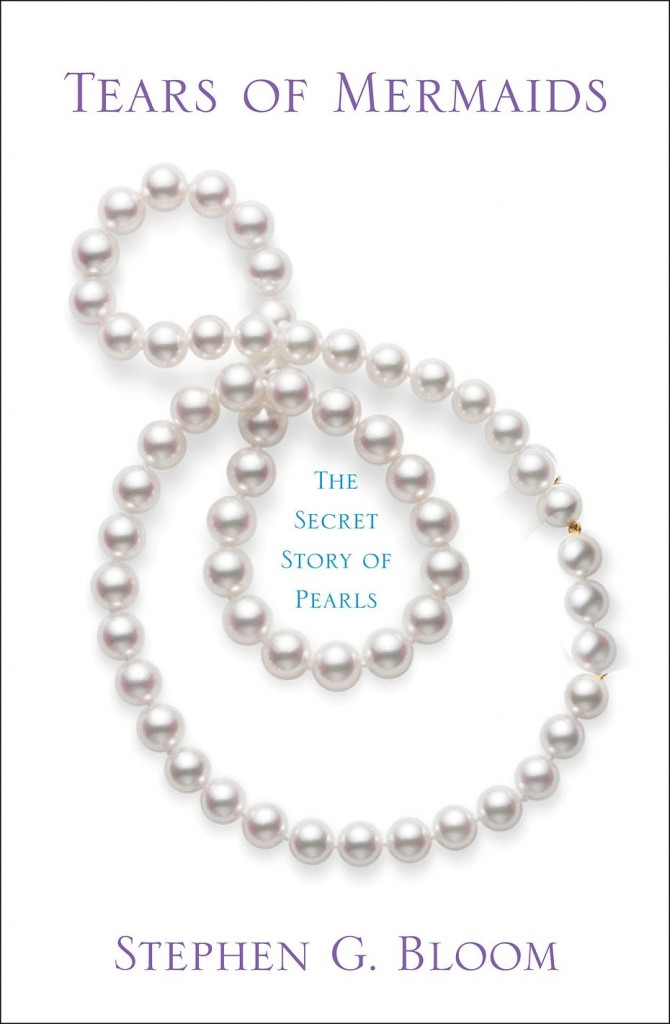 First let me say I was a bit put-off by Mr. Bloom’s prose style. He is without a doubt an elegant writer, but the glib-gonzo style, which is ok in a short piece, rapidly gets under the skin when stretched out to book length.
First let me say I was a bit put-off by Mr. Bloom’s prose style. He is without a doubt an elegant writer, but the glib-gonzo style, which is ok in a short piece, rapidly gets under the skin when stretched out to book length.
Mr. Bloom is a journalist and though journalists are not expected to necessarily be experts on the subjects the write about, they do have a responsibility to thoroughly research the topic and get it right. There are times when Bloom does, but there are times when he does not.
His first and most egregious error occurs in his introduction. “Pearl pricing”, he says, “is totally subjective …The same strand can go for three thousand dollars or thirty thousand dollars.” Nonsense! Oh yes, there is a fool born every minute, but the fact is that pearls trade in a fairly orderly market. So, absent the fool, no such gap between bid and ask prices exists (or the buyer would be soon out of business). Bloom would have been correct if he had said that there is no universally accepted hierarchical grading nomenclature. That is to say, one dealer may call the finest pearls “AAA”, while another may simply start with a single “A”. However the basic criteria: size, symmetry, surface, luster, orient and overtone are universal and used by all.
The writer’s statements about the people he meets in his travels say a great deal more about Mr. Bloom than they do about his sources. For example, early in the book he meets a survey group, including the celebrated former National Geographic writer Fred Ward who “seemed too important to have anything to do with me.” Well, I am familiar with that group and they have one afternoon in which to survey an entire gem show full of pearl dealers. Could it be that Ward was simply focused on his work? Given the book’s stated objective, one wonders why his Chapter 5, The Rana of Fresno, was included at all. Bloom takes such obvious pleasure in exposing the foibles, real and imagined, of his sources that, at times, it is difficult to tell if he is truly writing a book about pearls or just an extended gossip column.
Bloom’s comparison between the pearl and cocaine trade is unfortunate, as are the constant inferences that the pearl trade, and pearl dealers in general, are really quite sleazy. Bloom spends a page and a half justifying the cocaine comparison, finally admitting that “the biggest difference is that the possession of pearls is legal.” Cocaine is sold by neighborhood dealers and pearls by local jewelers, hey, no difference there! He might also have mentioned that unlike cocaine, pearls are not reduced in purity at every step along the distribution pipeline, and do not destroy the life of the purchaser– but that would have ruined the riff.
The above issues aside, there is much of value in Bloom’s book. Few have the opportunity to spend so much time trying to understand this old and arcane industry. Bloom’s first chapter, covering the history of pearls from the time of Columbus, is well researched and provocative. Interesting as well is his chapter on life as a deckhand on a Pearl boat off the Australian coast, though his attempt to capture the Australian argot is ludicrous and his contempt for the working sailors palpable. Yeah Stephen, having been a deckie, I kin tell yuz dat is ezakly the way sailors are “supposed to talk.”
His chapter on pearl trading in Hong Kong is excellent as is his description of diving off the Jewelmer pearl farm. A looming environmental catastrophe in the Philippines and his last two chapters about his visit to the island of Cubagua (where it all began) are thoughtful and poignant. Had he spent more words discussing real issues of this sort and less time lampooning the hard working people who made his book possible (I am one of those local jewelers), I would have enjoyed it a good deal more.



